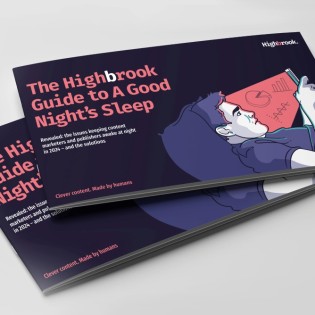Song titles as headlines

Intrigue wins
A lot of journalists secretly (and mistakenly) think they’re rock stars. As deluded as they are, looking at the punchy titles of some songs, most musicians could actually be great headline writers. Here’s a few fabulous song titles and what they can teach us about headline writing.
After Laughter Comes Tears
Wendy Rene, 1964
Not the six-word novel, but a four-word short story. These four words work hard to give you a vivid picture of Wendy Rene’s heartbreak, so vivid in fact, that the Wu-Tang Clan later sampled this song. To get the clout of this title in a headline, every word must contribute meaning. If it’s superfluous, get rid.
A Boy Named Sue
Johnny Cash, 1969
Have you ever heard of a boy named Sue, either before or after this song was released? No, me neither. This title is brief and intriguing, but there’s also the play on social norms at work here. You’re drawn in because it doesn’t sit with everything you know about the world. And that’s why if this was a headline, you’d want to read on.
I Fought The Law and the Law Won
The Clash, 1977
“I fought the law and I came away with a cleared name and some healthy compensation” doesn’t quite play as well, does it? This is an underdog story, and who doesn’t identify with an underdog who tries and fails? Like every great headline, this title draws attention to the biggest selling point of the story. Plus, it does it in a blunt and attention-seeking first-person style – one that was later commandeered by publishers like Vice, hoping, much like the Clash, to cut through the gush.
Blue Monday
New Order, 1983
When this record was released, few had heard the expression Blue Monday, but everyone had a sense of what it meant. The phrase is evocative and moody, and a bit abstract, but also strangely relatable. On the spectrum of headlines, this is the “weekly news magazine thinkpiece” type. Annoyingly, not everyone can write this kind of stuff but like Blue Monday, when they work, they really work.
Girlfriend in a Coma
The Smiths, 1987
Here Morrissey follows the daily newspaper headline writer rule: if you were at a bus stop and your bus was coming how would you tell the person next to you the story? He boils his drama down to the salient details, but, as the byline reads Morrissey, (or strictly speaking, The Smiths) you know there’s probably a little more to the story here. How did she get there? Is it serious? Morrissey tempts you through his choice of what he leaves in and what he leaves out.
Rebel without a Pause
Public Enemy, 1988
Puns! They’re endangered species in the online headline world, because search engines aren’t so great with the nuance of wordplay (although they really should be by now). If you can have a bit of fun, do it. It works for the tabloids and as Public Enemy show, it doesn’t have to be seedy or hackneyed.
Nabuma Rubberband
Little Dragon, 2014
Like shock, novelty can help too. If you have an entirely new concept, like Little Dragon had for an album title track, try it in the headline. If it’s new it’s news.
Black Man in a White World
Michael Kiwanuka, 2016
Sometimes, like Michael Kiwanuka, you just have to say it how it is. No frills, no shock tactics, a straightforward description of the story is interesting enough. Of course, like Michael Kiwanuka, you have to pick a story worth telling first.
Got a better suggestion? Do email us at info@hbrk.co.uk





